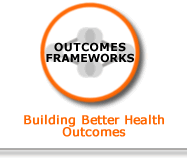Impact on outcomes
Possible gaps in evidence
Sources
Impact on short term and intermediate outcomes
There is review level evidence supporting:
- the effectiveness of mass media campaigns [1] (including increasing calls to quitlines and having a positive effect on quit rates [1]; demand for services being linked to media activity and increasing in response to it) [2]
- comprehensive tobacco control programmes which include mass media campaigns being effective in changing smoking behaviour in adults e.g. on smoking behaviour/prevalence and on increases in abstinence (but studies were from a heterogeneous group of studies of variable methodological quality and definitions used) [but recognised that intensity and duration of mass media campaigns may influence effectiveness and that this may be difficult to quantify [4]; one review noted how media presence or placement is as important as the messages themselves and how sufficient placements in the right locations are required to help change beliefs, attitudes and behaviours e.g. with timely news coverage generating community conversation which towards norm changes [1,5]
- multi-channel mass media campaigns (combined with other interventions) – see section above for more detail [1,3]
- media campaigns and concurrently implemented tobacco control programmes (although some studies were inconclusive) [1,3]
- adding peer group support and lottery incentives to mass media-based self-help interventions (increasing abstinence levels) [1,3]
- posters or printed media increasing awareness of campaigns [1,3]
- advertisements depicting suffering as a result of tobacco use (promoting smoking cessation or reinforcing decision to quit); dissonance-arousing messages specifically targeting girls (positive short-term effects on quit rates); graphic mass media messages about the negative consequences of smoking among adults having a positive effect on quit attempts among young people; [1,3]
- television (when messages recalled, associated with increased smoking cessation rates) [1,3]
- campaigns having a combination of hard-hitting ‘why to quit’ and supportive ‘how to quit’ messages [1,5]
- the co-ordination of communication campaigns to support the delivery of smoking cessation services, telephone quitlines, tobacco policy changes and school-based interventions, and any activities designed to help people stop using tobacco, and should be developed and delivered in partnership [1,5]
- some internet-based interventions (on quit rates), especially if appropriately tailored to users and frequent automated contacts with users occur (but note that trials did not show consistent effects) [1,3]; positive effects of various internet-based smoking cessation interventions among/applicable to young people [1,3,6]
- However, one (Cochrane) review did conclude that community interventions also found that despite often showing high awareness of the programme, increased knowledge of health risks, changes in attitudes to smoking, more quit attempts, and better environmental and social support for quitting in intervention communities, this rarely led to higher quit rates and reductions in community smoking levels, with smoking rates remaining similar between intervention and control communities even in the largest and best-designed/conducted trials [7]
.
Gaps in the evidence include:
- the longer-term effectiveness of new media (e.g. text messaging and podcasts to deliver personalised advice to smokers) and of workplace interventions [1]
- the impact of mass media smoking cessation messages on people who smoke and who are pregnant, socio-economically disadvantaged or from a minority ethnic group [1]
- a lack of evidence about which of the multi-media components of interventions are most effective/ineffective [1,3]
Source:
1. NICE (2008). Public Health Guidance 10 – Smoking cessation services in primary care, pharmacies, local authorities and workplaces, particularly for manual working groups, pregnant women and hard-to-reach communities. NICE, London
2. NICE (2007). Public Health Guidance Intervention Guidance 5: Workplace health promotion - how to help employees to stop smoking. NICE, London.
3. Jepson, R., Harris, F., Rowa Dewar N., et al on behalf of Cancer Care Research Centre, and Centre for Social Marketing, University of Stirling, Alliance for self care research, University of Abertay Centre for Reviews and Dissemination, University of York (2006). A Review of the Effectiveness of Mass Media Interventions which both Encourage Quit Attempts and Reinforce Current and Recent Attempts to Quit Smoking. For National Institute for Health and Clinical Excellence (NICE): Public Health Programme Guidance 10. NICE, London;
4. Bala M, Strzeszynksi L, Cahill K. Mass media interventions for smoking cessation in adults. Cochrane Database of Systematic Reviews 2008, Issue 1. Art. No.: CD004704. DOI: 10.1002/14651858.CD004704.pub2
5. Gutierrez, K., (2007). Mass Media Intervention to Stimulate and Promote Smoking Cessation: Expert Opinion Paper. For National Institute for Health & Clinical Excellence (NICE): Public Health Programme Guidance 10. NICE, London;
6. Civljak M, Sheikh A, Stead LF et al. Internet-based interventions for smoking cessation. Cochrane Database of Systematic Reviews 2010, Issue 9. Art. No.: CD007078. DOI: 10.1002/14651858. CD007078.pub3
7. Secker-Walker R, Gnich W, Platt S, Lancaster T. Community interventions for reducing smoking among adults. Cochrane Database of Systematic Reviews 2002, Issue 2. Art. No.: CD001745. DOI: 10.1002/14651858.CD001745
back to top |



